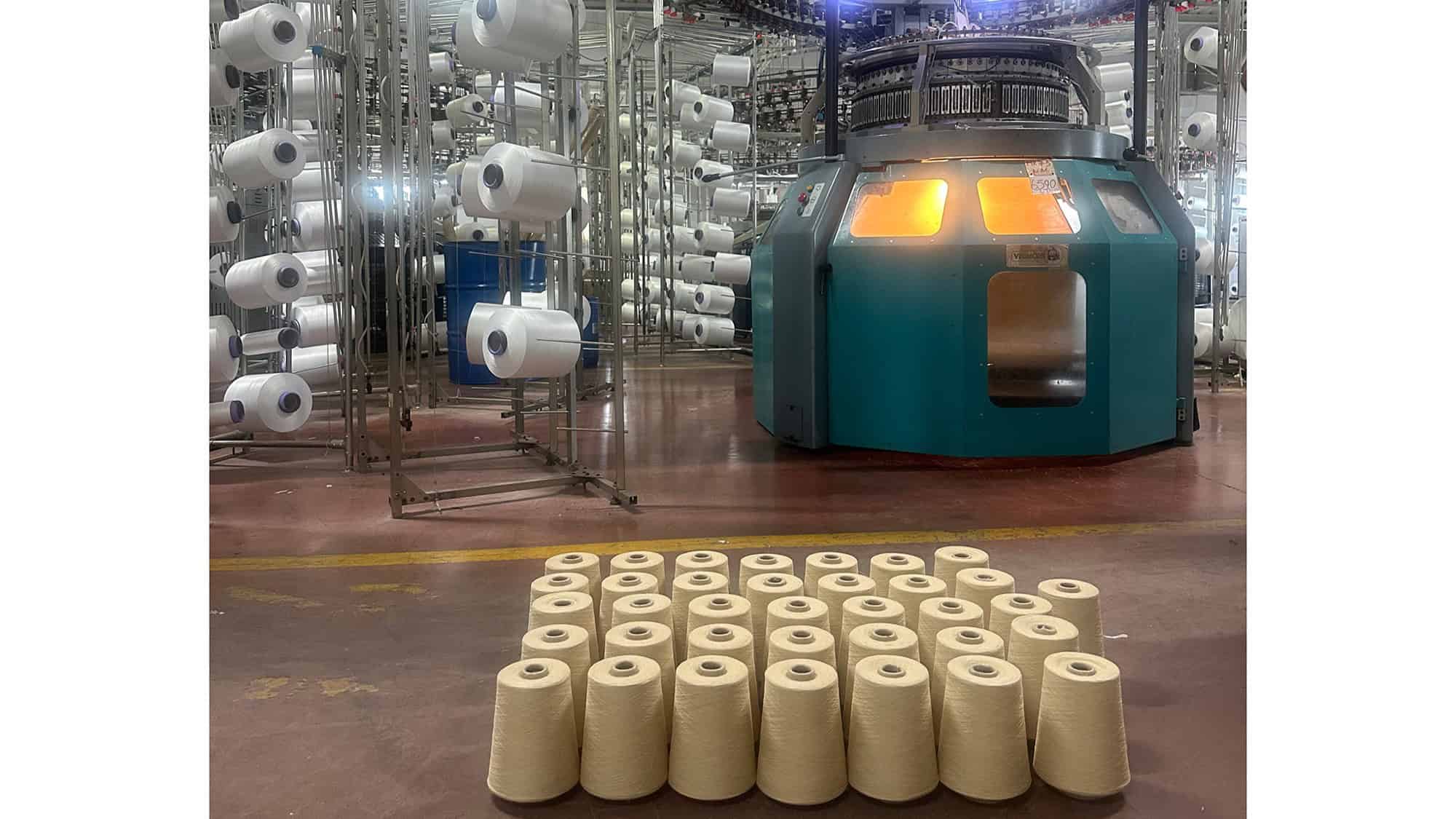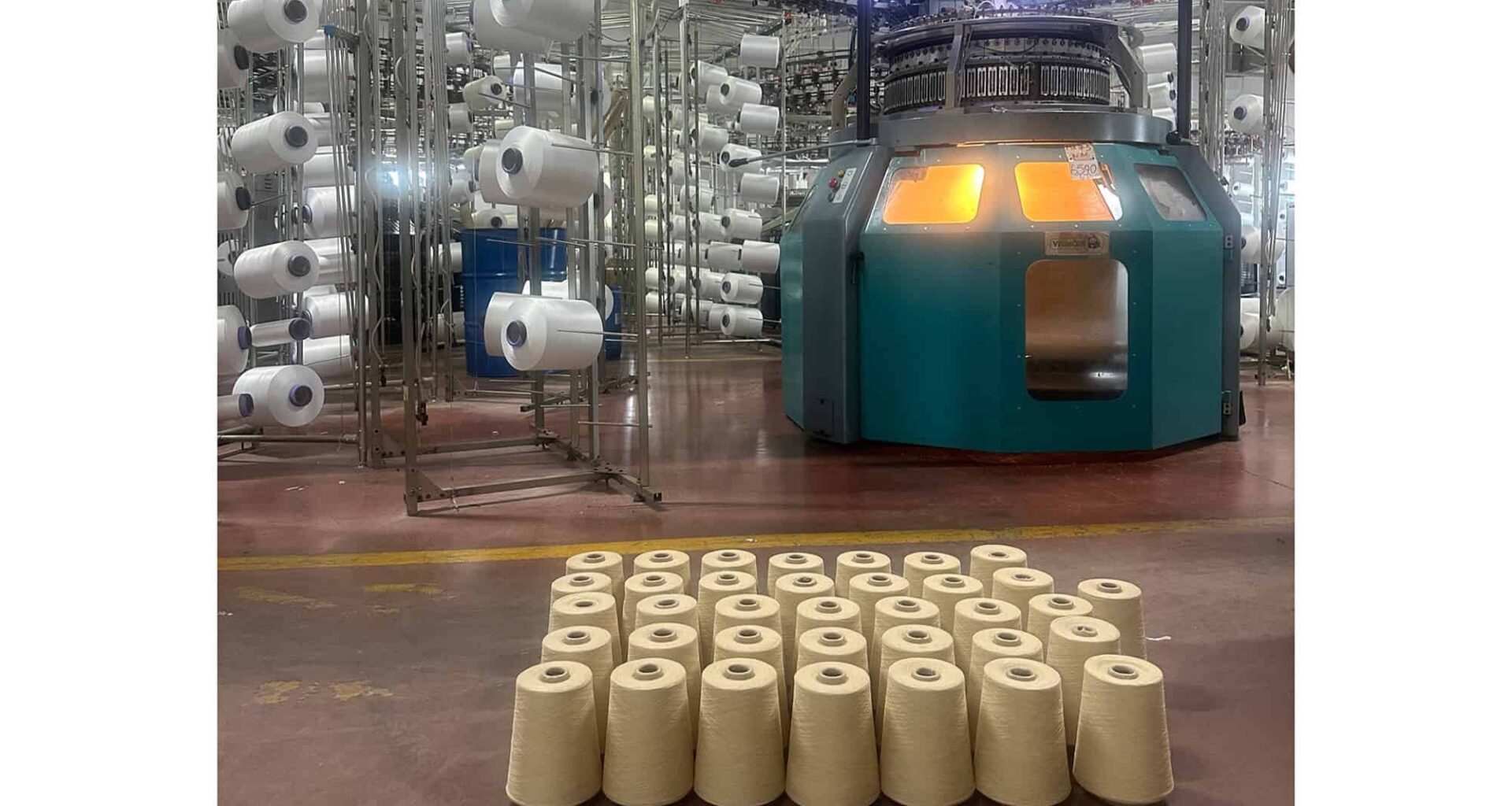 Fibers from leftover yeast biomass have significantly less environmental impact. Credit: Penn State.
Fibers from leftover yeast biomass have significantly less environmental impact. Credit: Penn State.
Penn State researchers say the stuff we throw away after making beer, wine, and even some medicines could help feed people and clean up fashion at the same time. In their new study, a team led by Penn State reports a fiber spun from leftover yeast biomass that beats natural fibers in strength while requiring far less land and water.
The idea is simple on its face. Beer and drug makers end up with tons of spent yeast — a mix of proteins, lipids, and sugars — once fermentation is complete. That “waste” usually heads to low-value uses or the bin. However, in their study, the team isolated the protein, dissolved the resulting pulp in a common solvent, and extruded it through a spinneret. They were then able to produce continuous strands that can be washed, dried, twisted into yarn, and woven into cloth. The solvent is the same one used to make the popular semi-synthetic fibre Lyocell and, according to the researchers, 99.6% of it can be recovered and reused each cycle.
“Just as hunter-gatherers domesticated sheep for wool 11,000 years ago, we’re domesticating yeast for a fiber that could shift the agricultural lens to focus far more resources to food crops,” said Melik Demirel, Pearce professor of engineering and Huck Chair in biomimetic materials at Penn State.
Demirel also says that the material can be made cheaply — about $6 per kilogram — while using far less water and land than wool. As a comparison, the team states that wool often costs $10–$12 per kilogram. The group also emphasizes that the yeast-based fiber is biodegradable, in stark contrast to polyester garments that can linger in landfills for decades
To test whether this could work outside a beaker, the researchers took the process to a factory in Germany and ran it for more than 100 hours at a time, in both batch and continuous modes. The result: over 1,000 pounds of fiber — enough to get past proof-of-concept and into “can this scale?” territory.
Researchers performed a full life-cycle assessment, modelling raw inputs, spinning, finishing, transport, and end-of-life, tracking cost, water use, greenhouse gas emissions and throughput at each step. They concluded that at a commercial scale, fermentation-based protein fibers can compete on price with wool and other staples while using considerably fewer resources.
A very old idea, rebooted
Protein fibers aren’t new. In the 1930s, Italy produced Lanital from casein, a milk protein. Variants from peanut and corn proteins followed. They faded once cheap, tough polyester took over. Past efforts ran into the same wall: performance and price. Demirel argues the new approach clears that wall. The team draws inspiration from amyloids (natural protein aggregates) and organizes them into long chains during spinning, boosting strength without relying on persistent chemical additives.
But the textiles aren’t where it ends. Cotton alone occupies about 88 million acres worldwide, Demirel notes. Large shares of that land sit in countries that also struggle to feed growing populations. Cotton is cheap at the bale, but the water and land toll are heavy.
The researchers point to a familiar benchmark: making roughly one T-shirt and one pair of jeans (about 2.2 pounds of cotton) can take up to 2,642 gallons of water. If a meaningful slice of fiber demand moves from fields to vats — where microbes turn crop byproducts into yeast biomass — some farmland could shift from fiber to food.
“In a sense, we’re domesticating yeast for fiber, like people domesticated sheep for wool millennia ago,” Demirel said. “Shifting even part of our fiber supply to biomanufacturing would free up resources that could go toward feeding people.”
That framing ties the work to the United Nations’ “Zero Hunger” goal. In 2024, an estimated 733 million people — approximately one in twelve worldwide — faced food insecurity. At the same time, more than two-thirds of clothing sold in the United States ends up in landfills. A biodegradable, yeast-based fabric made from an industrial byproduct aims straight at both problems: reduce the footprint of what we wear and cut waste at the source.
Many “eco-fibers” trade one problem for another — natural origin but weak performance, or good strength but harsh chemical footprints. The yeast fiber aims to thread the needle: protein-based, strong, and recyclable solvent use. It also forgoes additives that can shed micro-pollutants. None of that absolves it of tradeoffs; the team’s own analysis includes land devoted to the crops that feed the fermenters. Still, the math tilts toward lower impact than wool and other conventional fibers, the authors report.
“By leveraging biomanufacturing, we can produce sustainable, high-performance fibers that do not compete with food crops for land, water or nutrients,” Demirel said.
“Adopting biomanufacturing-based protein fibers would mark a significant advancement towards a future where fiber needs are fulfilled without compromising the planet’s capacity to nourish its growing population. We can make significant strides towards achieving the ‘Zero Hunger’ goal, ensuring everyone can access nutritious food while promoting sustainable development goals.”
The new findings appeared in the Proceedings of the National Academy of Sciences.

